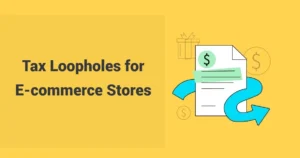If you run a Shopify store, you know how fast bookkeeping chaos can build up. With A2X for Shopify integration, we’ll help you turn that chaos into clarity, fast and stress-free. But here’s the real problem: reconciliation errors quietly drain profits, and nearly 70% of Shopify sellers still face mismatched payouts and missing fees.
In this post, we at SAL Accounting show you exactly how A2X integration with Shopify fixes that and why it’s worth every penny for your store’s growth.
Quick Takeaways
- A2X automates Shopify bookkeeping and matches payouts to bank deposits perfectly.
- Setup takes 30 minutes with basic accounting know-how (ask your bookkeeper for help.)
- Tracks COGS automatically to show real profit, not just sales.
- Saves hours monthly vs. manual errors, spreadsheets, and mismatched totals.
- Worth it for 50+ orders monthly, scales perfectly as your store grows.
A2X for Shopify: What It Does and Why It Matters
A2X for Shopify helps you keep your store’s accounts clean and easy to understand. It takes every sale, refund, fee, and tax from Shopify and turns them into simple summaries that go straight into QuickBooks or Xero (sync for QuickBooks & Xero) Your books always line up with your Shopify payouts, no exports, no formulas, no fixing numbers by hand. Here’s what A2X does for you:
- Makes payout summaries that include all sales, refunds, fees, and taxes.
- Connects automatically with QuickBooks or Xero to keep your books updated.
- Matches payouts to deposits so reconciliation takes just a few clicks.
- Keeps reports accurate and ready for tax time.
Work with a Shopify accounting expert in Toronto to set up A2X correctly and keep your books accurate every month.
How Do You Set Up A2X Shopify Integration the Right Way?
A2X for Shopify connects your store to your accounting software in just a few minutes. There are some of the best Shopify accounting software that help you a lot. After setup, it keeps your books accurate and saves you hours each month. Here’s how to do it right from the start:
| Step | Action | What to Check |
| 1. Connect A2X to Shopify | Log in to A2X → Click “Connect Shopify Store” → Approve access. | Ensure Shopify permissions are enabled. |
| 2. Connect to QuickBooks or Xero | Confirm integration permissions and clean the chart of accounts. | Confirm integration permissions and clean chart of accounts. |
| 3. Map Accounts & Taxes | Match Shopify data to QuickBooks/Xero accounts. | Review tax mapping by region or currency. |
| 4. Send and Match First Summary | Send first payout summary → Click “Match” in bank feed. | Totals should align with Shopify deposits. |
Step 1: Connect A2X to Your Shopify Store
Log in to A2X and click “Connect Shopify Store.” When Shopify asks for permission, hit Approve. A2X links to your store and pulls in your recent payout data. You’ll see your first summaries appear within a few minutes.
Pro Tip: If you have more than one Shopify store, connect them one by one and label each inside A2X. It keeps your reports clear and avoids mix-ups.
Step 2: Connect A2X to QuickBooks or Xero
Pick between QuickBooks Online and Xero as your accounting tool. Check how to integrate Shopify with Xero for better results. Log in and let A2X do its job. This lets A2X deliver your Shopify summaries straight to your books (executive summary), where you can look at them or compare them whenever you choose.
Pro Tip: Before you join, clear up your chart of accounts. Make sure you have separate accounts for Shopify sales, fees, shipping income, and gift card liability. It helps A2X get everything right from the start.
Step 3: Map Your Accounts and Taxes
Tell A2X where to send each type of data. Match these Shopify items with the right accounts in QuickBooks or Xero:
- Sales → Shopify Sales (Income)
- Refunds → Refunds/Returns (Expense)
- Fees → Shopify Fees (Expense)
- Shipping → Shipping Income
- Gift Cards → Gift Card Liability
- Taxes → Sales Tax Payable
Pro Tip: Double-check your tax mapping, especially if you sell to different regions or countries. Keep taxable and non-taxable sales separate to make reports accurate. Check out the top Shopify accounting practices for your store.
Step 4: Send Your First Summary and Check the Match
A2X is presently making your first payout summary. Send it to Xero or QuickBooks. After that, click “Match” on your bank stream. Your deposits should match the totals exactly.
Pro Tip: Try it out with one or two rewards initially. To save time, turn on automatic posting after everything looks good. Automating your Shopify accounting makes things easy.
How Does A2X Help Track COGS and Profit Accurately?
A2X for Shopify keeps track of your COGS, which are the real costs of the things you sell, such as materials and packing. It takes cost information from Shopify, adds up the totals for each transaction, and sends them to your accounting software automatically. This reveals your real profit, not simply your sales. Gain more on how to track COGS for Shopify stores. A2X keeps track of the units sold and their exact cost.
- The total cost of the product during each payout period.
- Correct gross profit after COGS.
- Reports that are up to date in QuickBooks or Xero.
Pro Tip: Look at the prices of your products in Shopify often. A2X uses that information to figure out your COGS, so making sure it’s right maintains your profit right.

How Does A2X Make Shopify Reconciliation Easy?
Shopify payments don’t always add up to sales totals. Fees, reimbursements, and discrepancies in timing might make the numbers wrong and make reconciliation hard. A2X for Shopify fixes this by taking all of your sales, refunds, fees, and taxes, organizing them by payout, and giving QuickBooks or Xero clean summaries that match your bank deposits exactly. Each A2X payout summary includes:
- Total sales and refunds
- Shopify and transaction fees
- Discounts and gift card activity
- Sales taxes collected
- The exact payout amount is deposited into your bank account
With everything in one place, you can open your bank feed, click “Match,” and confirm that the totals line up perfectly. You may also need a complete guide on Shopify payment reconciliation.
Pro Tip: For stores with high order volumes, switch A2X to daily summaries instead of payout summaries. This gives cleaner records and makes reviews or audits much easier.
A2X vs Manual Accounting: Which One Works Better for Shopify?
Manual bookkeeping works for small stores, but it gets messy fast as sales grow. A2X for Shopify automates everything, grouping your data into clean payout summaries that sync with QuickBooks or Xero and match your bank deposits in minutes. Here are the differences:
1. Speed and Efficiency
It takes time to do manual exports, like downloading CSV files, confirming totals, and repairing mistakes. A2X uploads accurate summaries in minutes and keeps your books up to date on its own. Taxes for Shopify sellers in the US and Canada will not be complicated anymore.
2. Accuracy and Error Reduction
Manual work leads to missed fees, duplicate entries, and mismatched payouts. A2X organizes every transaction correctly and ensures your deposits and reports match to the cent.
3. Tracking COGS and Profit
Spreadsheets can’t track COGS (Cost of Goods Sold) automatically. A2X pulls product costs from Shopify, calculates totals for each payout, and gives you real profit insights. Cash flow statement analysis for Shopify is also important.
4. Multi-Store and Multi-Currency Support
It’s tougher to keep track of your money by hand if you run more than one store or sell in several currencies. A2X makes it easy to keep track of both, making sure that every store and currency is correct and organized.
5. Setup Time and Learning Curve
Manual systems take hours to build and maintain. A2X sets up in under 30 minutes and updates everything for you automatically.

Case Study: Fixing Setup Issues for a Canadian Home Décor Store
A Shopify store owner from Toronto contacts SAL Accounting:
Problem:
They sell about $85,000 each month in home décor products. Their A2X setup is confusing, and their QuickBooks Online chart of accounts is disorganized. Sales, refunds, and fees end up in the wrong places, causing payout mismatches and hours of extra work every month.
What We Do:
We organize their chart of accounts, create clear categories for Sales, Shopify Fees, Shipping Income, and Gift Card Liability, and remap everything inside A2X. We test a few payouts before turning on auto-posting to make sure everything matches.
The Result:
All payouts now match perfectly with their bank deposits. Their accountant finishes the month-end close in one hour instead of six. The store saves $500 a month in accounting time and no longer deals with errors.
Is A2X Really Worth It for Your Shopify Store?
For most growing stores, yes. It saves hours, cuts errors, and keeps your books accurate automatically. What used to take days now happens in minutes. A2X isn’t free, but its value easily outweighs the cost once your store grows. Plans scale by order volume and integrations, so smaller sellers can start simple and upgrade as needed. Here’s why most sellers say it’s worth it:
- Saves time every month by automating bookkeeping.
- Prevents errors with accurate payment reconciliation and clean reports.
- Tracks real profit by syncing COGS automatically.
- Simplifies tax time with audit-ready summaries.
- Reduces stress and makes accounting simple for growing teams.
You can also choose our e-commerce accounting services for clean and reliable financials.
What Are the Challenges or Downsides of Using A2X for Shopify?
No tool is perfect. A2X has a few small issues. They don’t hurt its value, but they just set clear expectations. Be careful about the e-commerce sellers’ mistakes in accounting that may cost you a lot.
1. Pricing Can Add Up for Big Stores
A2X charges based on order volume and platforms. Thousands of orders each month? The price feels high. Most sellers still love it. It saves tons of time and stops accounting mistakes.
2. Set up Needs Some Accounting Knowledge
Setup takes basic bookkeeping know-how.
- Know where to put sales, refunds, fees, and taxes in QuickBooks or Xero.
- Unorganized chart of accounts? Setup takes longer.
- Map everything right once. A2X remembers and syncs automatically.
- Ask your bookkeeper for help the first time.
3. Limited Reporting Inside A2X
A2X focuses on accuracy, not analytics. It sends clean data to your software. Profit and loss reports come from QuickBooks or Xero.
4. Occasional Syncing Delays
Sometimes, Shopify or the accounting tool updates slow syncing. Or need to reconnect. It happens rarely and fixes quickly. Get accurate bookkeeping for e-commerce and stay ready for growth with SAL Accounting.
Case Study: Replacing Manual Spreadsheets for a Growing Apparel Brand
A Shopify apparel seller from Vancouver contacts SAL Accounting:
Problem:
They handle over 450 monthly orders and still do bookkeeping manually with spreadsheets. Each payout takes hours to review, and mismatched totals cause delays in tax filing and extra costs during year-end reviews.
What We Do:
We connect A2X for Shopify to QuickBooks Online, set up automatic payout summaries, and map key accounts like COGS, Sales, and Fees. We train their bookkeeper to check reports quickly and match payouts in a few clicks.
The Result:
Reconciliation time drops from two days to under an hour. The brand saves about $750 a month in accounting costs and no longer deals with manual errors. Their books stay accurate, and tax time is simple.
| Challenge | What It Means | Impact | Quick Fix |
| Pricing | Cost rises with order volume. | Feels high for big stores. | Time saved offsets cost. |
| Setup Knowledge | Needs basic accounting setup. | Errors if mapped wrong. | Ask the bookkeeper for help. |
| Limited Reports | Focuses on accuracy, not analytics. | No built-in P&L view. | Use QuickBooks or Xero. |
| Sync Delays | Occasional update lags. | Temporary data gaps. | Reconnect and refresh. |
Final Thoughts
Bookkeeping doesn’t have to slow your Shopify store. A2X brings order to accounts. Automates matching. Tracks COGS. Delivers clear reports. Saves hours each month. Stops costly errors. Keeps books tax-ready and accurate. No spreadsheets. No confusion. Setup needs some accounting know-how. Payoff comes fast as the store grows. Want to end payout mismatches? Focus on real growth? A2X is worth every penny.
For expert help with A2X setup or Shopify books, contact us at SAL Accounting. We make books simple, precise, and ready to scale.
FAQs About A2X for Shopify
A2X automates bookkeeping. It grabs sales, refunds, fees, and taxes from Shopify. Then sends clean summaries to QuickBooks or Xero. Keeps books accurate and matches payouts automatically.
Log in to A2X. Click “Connect Shopify Store” and approve. Then connect QuickBooks or Xero. A2X starts sending summaries right away.
Yes! It pulls product costs from Shopify. Calculates total costs automatically. Shows real profit clearly.
For a few orders a month, manual work works fine. Past 50+ sales, A2X saves hours, stops errors, and keeps books audit-ready.
Yes! It grabs all tax info from Shopify. Sends it to the accounting software. Makes tax filing easy and accurate.
Manual = slow + error-prone. A2X = automatic. Groups transactions into summaries. Matches payouts to bank deposits perfectly.
Cost based on order volume. Plans start small and grow with business.
Yes! Works with Amazon, eBay, Etsy, and Walmart, too. Manages all e-commerce accounting in one spot.






